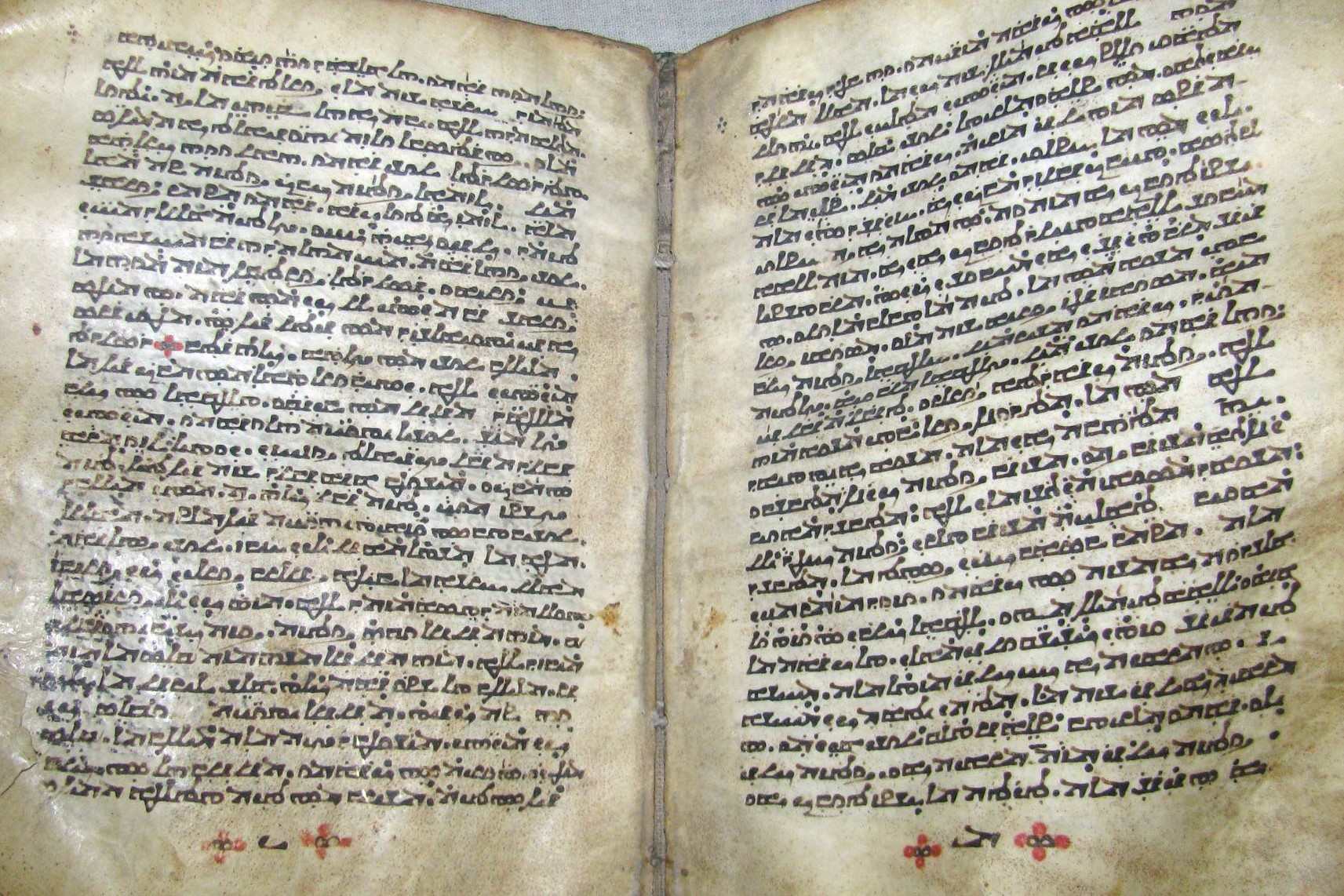
What is the Peshitta? The Peshitta is the standard Bible for Syriac-speaking Christian communities, including the Maronite and Chaldean Catholic Churches. Written in Classical Syriac, a dialect of Eastern Aramaic, it stands out for its historical and cultural significance. The term "Peshitta" translates to "simple version," though it can also mean "common" or "straight." This ancient text has roots in early Christianity, gaining prominence in the fourth century. With over 250 known manuscripts, the Peshitta influenced other biblical translations and played a crucial role in spreading Christianity throughout the Middle East and beyond.
What is the Peshitta?
The Peshitta is a cornerstone of biblical literature, especially within the Syriac Christian tradition. Its history, language, and influence are vast and fascinating. Here are 25 facts that shed light on this ancient text.
-
Etymology: The term "Peshitta" comes from the Syriac mappaqtâ pšîṭtâ (ܡܦܩܬܐ ܦܫܝܛܬܐ), meaning "simple version." It can also mean "common" or "straight," reflecting its straightforward nature.
-
Language: Written in Classical Syriac, a dialect of Eastern Aramaic, the Peshitta originated around Edessa. This dialect is distinct from the early Galilean Aramaic spoken by Jesus and his disciples.
-
Script: The text uses the Syriac alphabet, unique to this dialect. When transliterated into Latin script, it appears as Peshitta, Peshittâ, Pshitta, Pšittâ, Pshitto, and Fshitto. The most common English spelling is Peshitta.
Historical Context and Origins
Understanding the historical backdrop of the Peshitta provides insight into its significance and development.
-
Old Testament Translation: The Peshitta is the oldest Syriac translation of both the Old and New Testaments. It was first referenced by Moses bar Kepha (died 913) and later by Gregory bar Hebræus.
-
Historical Context: Its roots trace back to the early Christian period. Melito of Sardis in the second century mentioned a Syriac version of the Old Testament. By the fourth century, Church Fathers like Augustine and Chrysostom acknowledged it.
-
Traditional Ascription: Legend attributes the Peshitta's origin to Abgar, King of Edessa. However, this is more myth than historical fact.
Translation and Manuscript Evidence
The translation process and manuscript evidence highlight the Peshitta's authenticity and scholarly value.
-
Multiple Translators: Translating the Bible into Syriac was a lengthy process involving multiple translators and revisions over centuries.
-
Manuscript Evidence: Over 250 known manuscripts of the Old Testament Peshitta exist, with the oldest ones being crucial for scholarly study.
-
Circulation in the East: From the 5th century onward, the Peshitta was widely circulated and accepted by various Syriac Christian sects, significantly influencing missionary work.
Influence and Printing History
The Peshitta's influence extends beyond its immediate religious context, impacting other translations and even reaching Europe.
-
Influence on Other Versions: The Peshitta influenced Armenian, Georgian, Arabic, and Persian translations. The Nestorian tablet of Chang'an shows its presence in China in the 8th century.
-
First Printing in Europe: Moses of Mardin brought the Peshitta to Europe. In 1555, Albert Widmanstadt printed the New Testament in Syriac in Vienna.
-
Immanuel Tremellius’s Contribution: Immanuel Tremellius, a converted Jew, issued a Syriac New Testament in Hebrew script in 1569, aiding English reformers and divines.
Scholarly Editions and Modern Studies
Scholarly efforts to refine and study the Peshitta continue, reflecting its enduring importance.
-
Paris Polyglot Edition: Gabriel Sionita prepared the editio princeps of the Old Testament for the Paris Polyglot in 1645. The entire Peshitta was included in Walton’s London Polyglot in 1657.
-
John Leusden and Karl Schaaf’s Edition: Their edition, known as "Syrschaaf" or "SyrSch," remains significant in scholarly circles.
-
Critical Editions: Recent critical editions, like G. H. Gwilliam’s at the Clarendon Press, are based on numerous manuscripts, showcasing ongoing scholarly efforts.
Debates and Language Differences
The Peshitta's primacy and language differences have sparked debates among scholars.
-
Peshitta Primacy Debate: Some argue the Peshitta is the original New Testament text. However, most scholars believe it is a 4th-century translation from Greek, revising the Old Syriac tradition.
-
Language Differences: Written in Classical Syriac, which is 200-300 years younger than early Galilean Aramaic, the Peshitta can lead to misunderstandings or mistranslations, especially in idiomatic expressions.
Manuscript Transmission and Cultural Impact
The Peshitta's transmission and cultural impact highlight its enduring legacy.
-
Manuscript Transmission: Despite its age, the Peshitta has a strong manuscript transmission with few copyist errors. However, the core text contains some subtle mistakes requiring careful examination.
-
Historical Significance: The Peshitta played a crucial role in spreading Christianity throughout the Middle East and beyond, influencing various biblical translations and historical records like the Nestorian tablet.
-
Scholarly Studies: Numerous scholarly studies, such as H. Weiss’s dissertation on Deuterojesaja and L. Warszawski’s work on Isaiah, have focused on the Peshitta.
Bibliography and Modern Editions
The Peshitta's extensive bibliography and modern editions reflect its ongoing relevance.
-
Bibliography: Works like Sebastian P. Brock’s The Bible in the Syriac Tradition and P. B. Dirksen’s La Peshitta dell'Antico Testamento provide valuable insights into its history and translation.
-
Modern Editions: The British and Foreign Bible Society issued a separate volume of the Syriac Old Testament in 1823, and the Syriac version of the New Testament was published in 1826.
-
Digital Availability: The Eep Talstra Centre for Computer-Assisted Analysis of Texts has made the complete Peshitta available on GitHub, facilitating further scholarly research.
-
Interlinear Translations: Interlinear translations combining Aramaic, Hebrew, and English offer additional tools for scholars and readers interested in comparative biblical studies.
-
Cultural Impact: Beyond its religious significance, the Peshitta reflects the linguistic and cultural heritage of Syriac-speaking communities, influencing literature and education worldwide.
The Peshitta's Lasting Impact
The Peshitta stands as a cornerstone in the history of Christianity, especially within the Syriac tradition. Its Classical Syriac language and unique alphabet set it apart from other biblical texts. With roots tracing back to the early Christian period, it has influenced numerous other translations, including Armenian, Georgian, Arabic, and Persian versions. The Peshitta's wide circulation and acceptance by various sects of Syriac Christianity underscore its importance. From its first printing in Europe to modern digital availability, the Peshitta continues to be a subject of scholarly study and debate. Its cultural and religious significance remains profound, reflecting the linguistic and cultural heritage of Syriac-speaking communities. The Peshitta isn't just a text; it's a testament to the enduring legacy of early Christian scholarship and missionary efforts.
Was this page helpful?
Our commitment to delivering trustworthy and engaging content is at the heart of what we do. Each fact on our site is contributed by real users like you, bringing a wealth of diverse insights and information. To ensure the highest standards of accuracy and reliability, our dedicated editors meticulously review each submission. This process guarantees that the facts we share are not only fascinating but also credible. Trust in our commitment to quality and authenticity as you explore and learn with us.


